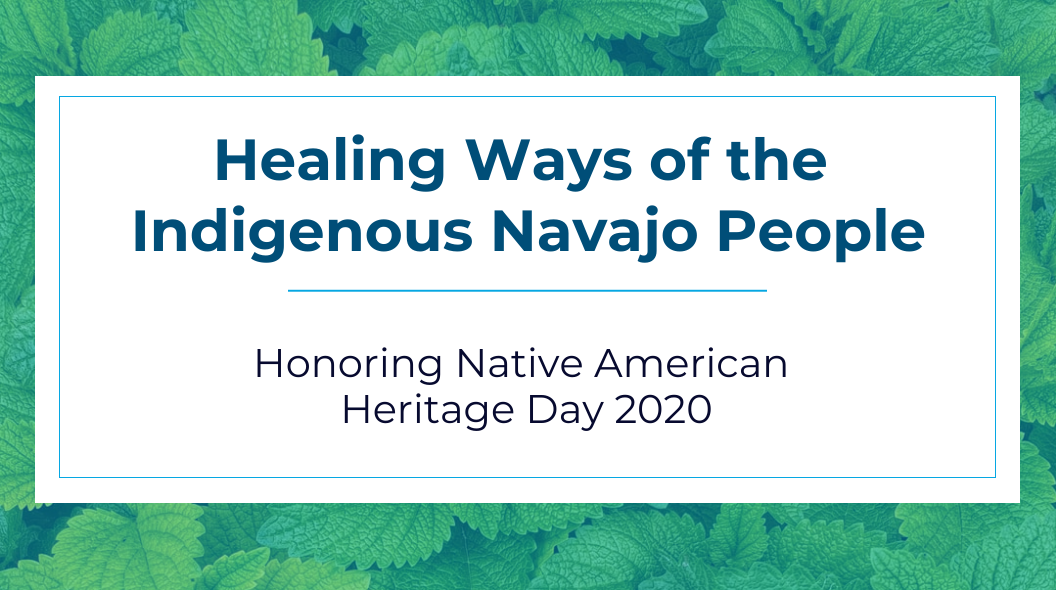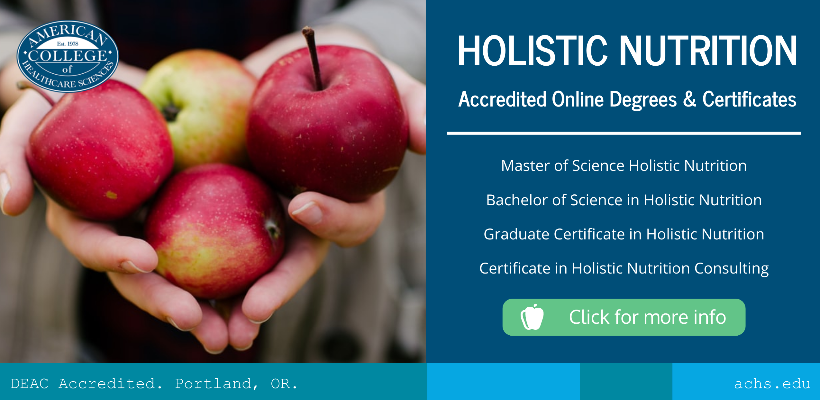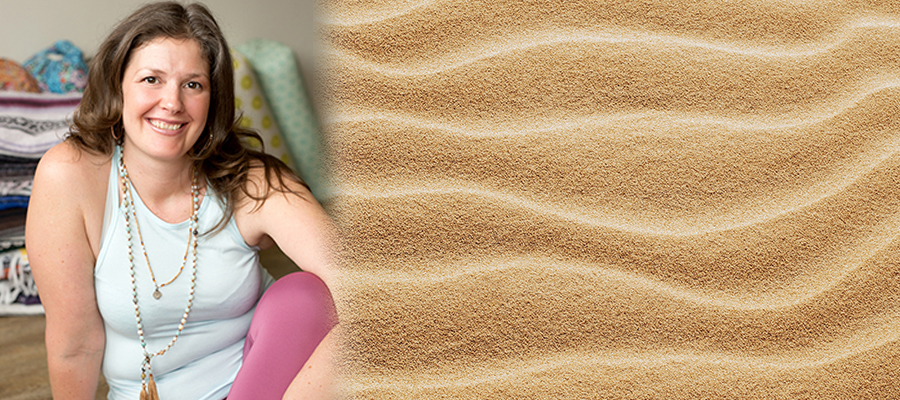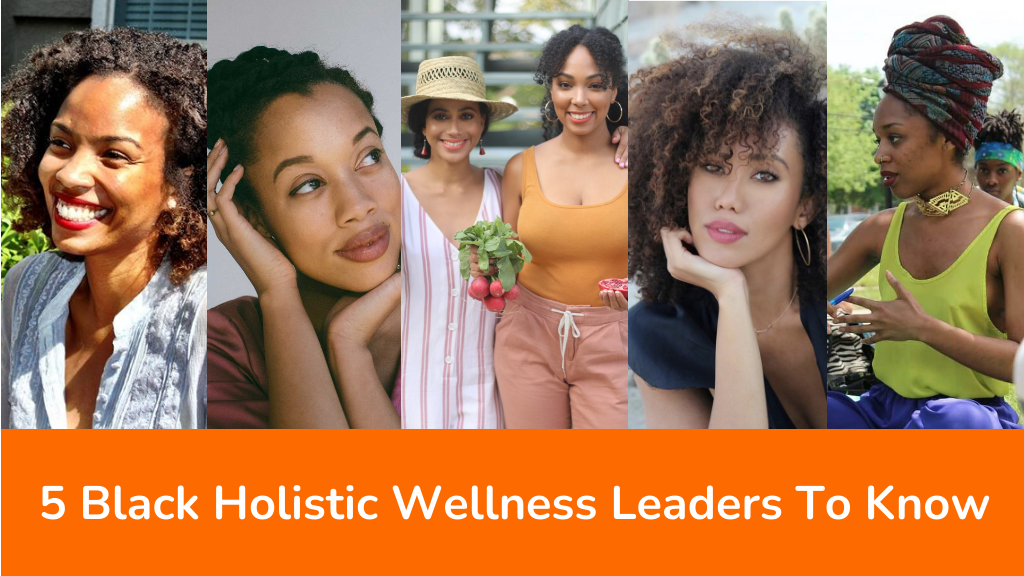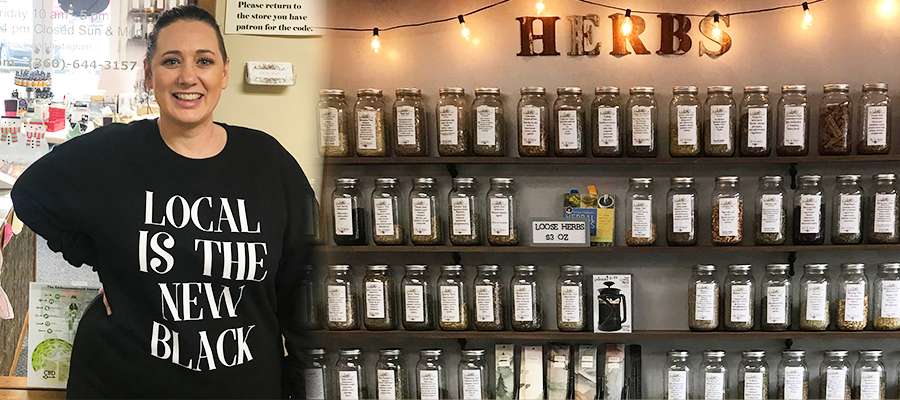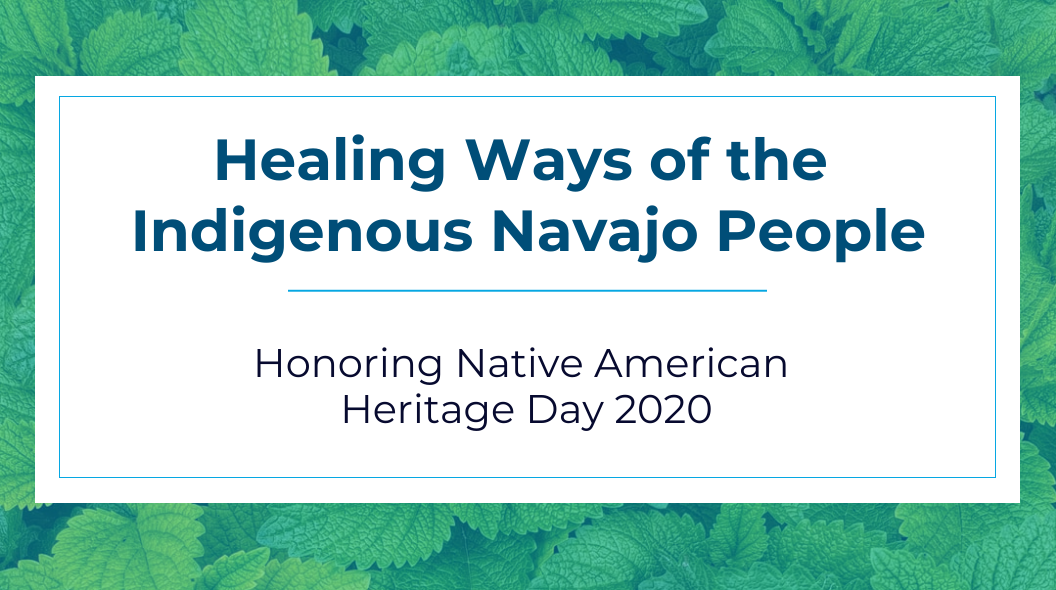
This article was written by ACHS student Jennifer Galuska in honor of Native American Heritage Day.
Native American Heritage Day is a day to reflect and honor the history, traditions, and culture of all indigenous native ancestors in the United States.
I am of the Navajo Nation, the poorest and most populated of all U.S. tribes. We call ourselves Diné, which means "the people." I am immensely proud of my heritage and still have so much to learn. I did not grow up in a household where my being native was any different than anyone else. My Western European grandparents raised me, who became mom and dad. In a sense, it was a good lesson to learn that I was no different, yet I always felt lost and disconnected in my understanding of native traditions. As I grew older and more curious, I finally found something that made sense and brought me closer to the land and native culture. In my late teens is where my love of naturopathy, plants, and herbs bloomed into jobs, a college degree, and a career for the rest of my life.
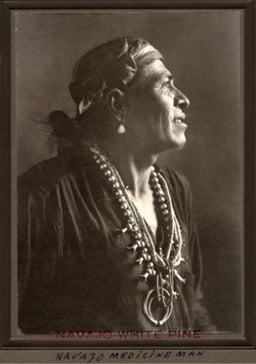 Native herbalism has been around for thousands of years. It was very much a part of daily life in the past, but over the years, it's become less used due to the lack of knowledge and passing on the elders' traditions [1] . For the Navajo, there are many steps to healing. Like in western medicine, we see the general practitioner, ophthalmologist, ear, nose, throat specialists, psychiatrists, and many others.
Native herbalism has been around for thousands of years. It was very much a part of daily life in the past, but over the years, it's become less used due to the lack of knowledge and passing on the elders' traditions [1] . For the Navajo, there are many steps to healing. Like in western medicine, we see the general practitioner, ophthalmologist, ear, nose, throat specialists, psychiatrists, and many others.
For the Diné, there are three prominent specialists. The herbalist, the Shaman, and the singer (medicine man). They all have their parts in helping heal the sick. Like in our western naturopathic beliefs, there is a body, mind, and spirit influence when talking about health and disease. The Diné sees illness as a "disharmony in the universe" [1]. Wow, I love that saying; it speaks to me loud and clear. So, for us, the disease goes well beyond our physical body and our immediate surroundings. I genuinely believe not just natives, but all life forms are a part of this entire universe. How could we not be a tiny part of the cosmos? (Insert the ethereal music here). Okay, oops, I went down a long and deep path there for a second. Let's get back to the three healers.
The Herbalist: They use various medicinal herbs available in their locations for symptomatic purposes. I researched the herbs used by the Navajo, and one source said there are around 522 plant species found within the Navajo Nation [3]. Amazing! I do not even think I could rattle off 50 medicinal plants right now. That is a crazy amount. I will be honest; I am learning a lot here. Oh, and most Navajo herbalists are women, yes!
The Shaman/Medicine Man: Many think they are the same person, and in a sense, they are. I know if you have had any interest in Native American culture or spiritualism, you have run across the names, Shaman or Medicine Man. It seems like anyone can be a Shaman in this new world, but guess what? Indigenous people have been doing it for centuries. What makes them different is that the Shaman is closer to what you may call god. The Shaman to the Navajo is a person with profound respect as a healer and a religious leader [5]. 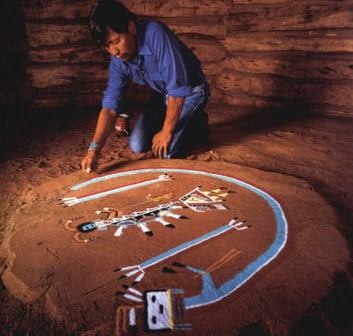 They are often the ones to diagnose a person's root of the imbalance; once they have diagnosed this, they start the one with dis-ease on a spiritual path to healing. They often will sing, chant, and use sandpainting to heal the sick.
They are often the ones to diagnose a person's root of the imbalance; once they have diagnosed this, they start the one with dis-ease on a spiritual path to healing. They often will sing, chant, and use sandpainting to heal the sick.
I have been fascinated by the fact that the Navajo, Ayurveda, and Australian cultures share similarities in the sandpainting competition. Sandpainting to the Navajo means "a place where gods come and go" and it is the portal source for the Shaman to connect with the gods to help heal the patient [4]. How mind-blowing is that? Next is the Medicine man.
The Medicine man traditionally is a singer. They also incorporate chanting, herbs, and prayer. The ceremonies performed, by song, will last from one to nine days long. Long term cases such as depression or chronic pain will take days to complete. What is impressive is that one or two songs can take years to learn correctly, so you can understand the dedication and commitment it takes to carry on such a tradition. It is one thing to become a western M.D. in 8-10 years, but the average apprenticeship of a medicine man can take several years. [6] That is a real expert in my book!
As humans, we are always learning, and in this time of Covid-19, I have seen first-hand not only my tribe of the Navajo nation but also the Washoe/Paiute in Nevada come together to help each other in times of great stress. I work with a young tribal member of the Washoe/Paiute who contracted Covid-19. Her family came together to support her. Her mother went out into the Nevada desert and dug up a common herb called Doza or Dosa root Lomatium dissectum. She frequently drank a diffusion from the thick brown dried root. She also burned the Doza root and inhaled the smoke. These are traditional ways this herb is used to support a healthy body. After returning to work, we investigated and found out that the Doza root is also called Biscuitroot or Lomatium [7]. It is heartwarming to see a native plant here in Nevada that's being used by Nevada's indigenous people to get through this critical time in all of the world. I hope I brought some information to you that is interesting and educational.
Disclaimer: This article is for informational purposes only. It is not intended to treat, diagnose, cure, or prevent disease. This article has not been reviewed by the FDA. Always consult with your primary care physician or naturopathic doctor before making any significant changes to your health and wellness routine.
Disclosure of Material Connection: I am a student at the American College of Healthcare Sciences, the Institution that publishes this blog. However, all opinions are my own. This blog may contain affiliate links. I am disclosing this in accordance with the Federal Trade Commission’s 16 CFR, Part 255: “Guides Concerning the Use of Endorsements and Testimonials in Advertising.”
References:
[1] Dempsey, M. Diné Be'azee': Diné Traditional Medicine. Yale National Initiative.
https://teachers.yale.edu/curriculum/viewer/initiative_12.05.01_u
[2] Birchfiled, D.L. Navajos, Countries and their Cultures.
https://www.everyculture.com/multi/Le-Pa/Navajos.html
[3] Elmore, F.H. (1944). Ethnobotany of the Navajo. [Monograph].
http://theplantlady.net/resources/Ethnobotany%20of%20the%20Navaho.pdf
[4] Navajo Sandpaintings. Navajo People – The Diné.
https://navajopeople.org/navajo-sand-painting.htm
[5] navajocodetalkersadmin (2014, August, 12). Navajo Shaman. Navajocode.
https://navajocodetalkers.org/navajo-shaman/
[6] Lewis, R.B. Navajo Culture. Discover Navajo.
https://www.discovernavajo.com/navajo-culture.aspx
[7] Biscuitroot. O.N.E. Online Nevada Encyclopedia.
http://www.onlinenevada.org/articles/biscuitroot
About American College of Healthcare Sciences
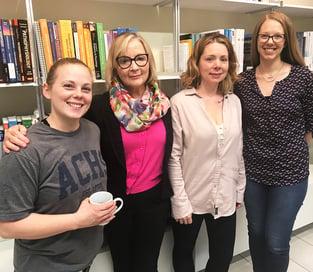 American College founded in 1978, is a fully online accredited institute of higher education specializing in holistic health. Based in Portland, OR; our goal is to make research-driven and science-based holistic health education taught by industry-leading experts accessible to anyone anywhere while still giving students a hands-on experiential learning experience like a traditional college and a strong sense of community, school pride and student bond.
American College founded in 1978, is a fully online accredited institute of higher education specializing in holistic health. Based in Portland, OR; our goal is to make research-driven and science-based holistic health education taught by industry-leading experts accessible to anyone anywhere while still giving students a hands-on experiential learning experience like a traditional college and a strong sense of community, school pride and student bond.
This commitment to our students and graduates reflects in our current survey results that reflect 98% of our students would recommend ACHS to a friend or family member.
We believe education is the most powerful tool for changing an individual and the world around us.
When a person enrolls as ACHS, it is vitally important that they graduate with tools they need to forge their own holistic and sustainable missions, build up their communities confidently and changing the face of healthcare with knowledge.

